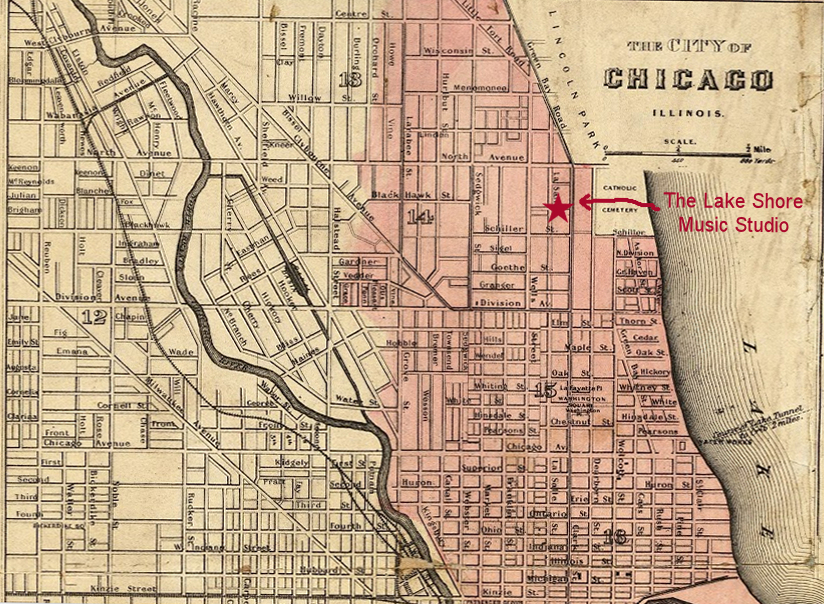This map shows the current location of The Lake Shore Music Studio at Sandburg Village in relation to The Great Chicago Fire of October 8, 1871.
The pink area on this edited map indicates the area that was burned north of the river.
You can click on this link to see more of the map and read more about the Great Chicago Fire.
It’s fun to put yourself in history. Look around and imagine how much has changed.
The people escaping the flames on that early fall day could hardly imagine what the city would ultimately become.
Study the map and note that Clark Street north of North Avenue was called Green Bay Road. Where it intersects with Lincoln was called Little Fort Road.
Much of the “Gold Coast” area to the east including the Cardinal’s Residence was part of the Catholic Cemetery.
Did you know that Mary Todd Lincoln, widow of the slain President Abraham Lincoln was living in Chicago and escaped the fire with her son Robert by going to the lake?
Take a minute to listen to these two songs written shortly afterwards “Passing Through the Fire” and “Pity the Homeless.”
The song that might be the most popular is “There’ll Be a Hot Time in the old Town Tonight.”
This song was already well known but was adapted to commemorate the disaster.
Unfortunately its popularity was helpful in continuing the myth that the fire was caused by Mrs. O’Leary and her cow. Mrs O’Leary was ultimately exonerated by the City Council in 1997.
Here are the lyrics from the popular Chicago version of the song.
“Late one night,
When we were all in bed,
Old Mother Leary
Left a lantern in the shed;
And when the cow kicked it over,
She winked her eye and said,
‘There’ll be a hot time
In the old town, tonight.’”
For you sports fans you might recognize this as one of the favorite songs used to rally on the soccer team.
Here’s a very funky honky tonk piano version on an out of tune piano.
Finally check out this cartoon from the 1940’s and see how the music is used to augment the action of the animation.
Listen closely to hear the “Carnival of Venice” theme.
It ends with a sing-along version of “The Hot Time..” song.
Sing-A-Longs before and after the main movie feature were very popular in the movie theaters at the time.


